51+ Ways To Come Up With Blog Content Ideas 
Content is how people find your website. Success is often determined by the amount of quality material your blog has available. Because there are so many blogs available to read on the Internet, any lull in your writing sends people to your competition.
Even the most optimized web hosting solution can’t help if there is no content for visitors to read.
These lulls are often caused by the dreaded writer’s block.
In reality, the lack of blog content ideas doesn’t have to be something that stops you from creating great posts. The best advice I can give you is to not overthink the problem. There are many ways you can get ideas for blogging when you feel stuck.
Below are more than 51 ways you can get blog post topic ideas. While some require a bit of research, all of them can be effective for inspiring you to write. Some of these may already be a part of your website marketing tools.
1. Blog Topic Generator by HubSpot

Blog Topic Generator is a useful tool for getting ideas for blog posts. Essentially, you put in up to three nouns and the system will produce a list of five different topics based on HubSpot’s algorithms.
This means the titles are pulled from the most popular terms used on the Internet today.
2. Expanding on Previous Ideas
There’s nothing wrong with taking one of your ideas from the past and expanding more fully. For example, you could write a review about a particular product or service.
Months later, why not create a more in-depth analysis regarding the use of those goods? You could also place an internal link between the two.
3. Deriving Articles from Lists
If you’ve created a list article in the past, you can write each one of those points as a separate article.
For instance, a blog post about 10 exercises to strengthen your abs could then link to 10 different reviews of each exercise. It’s like creating a chain of content as each post leads to another.
4. UberSuggest
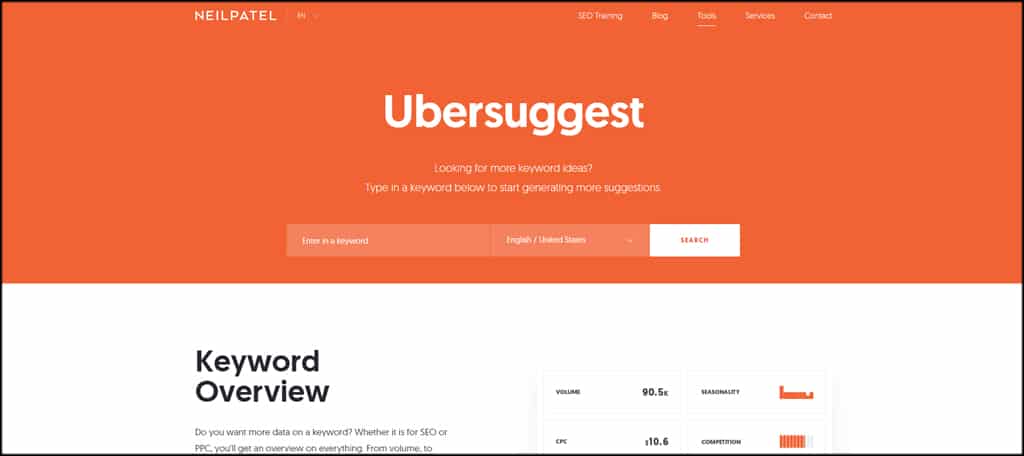
UberSuggest is a simple system that takes your keyword and allows you to search the web, images, shopping, YouTube and news to find content phrases. In reality, it works much like the Keyword Tool in Google Adwords by showing the most popular variations.
What sets this apart is that it analyzes more than just Google search.
5. Alltop
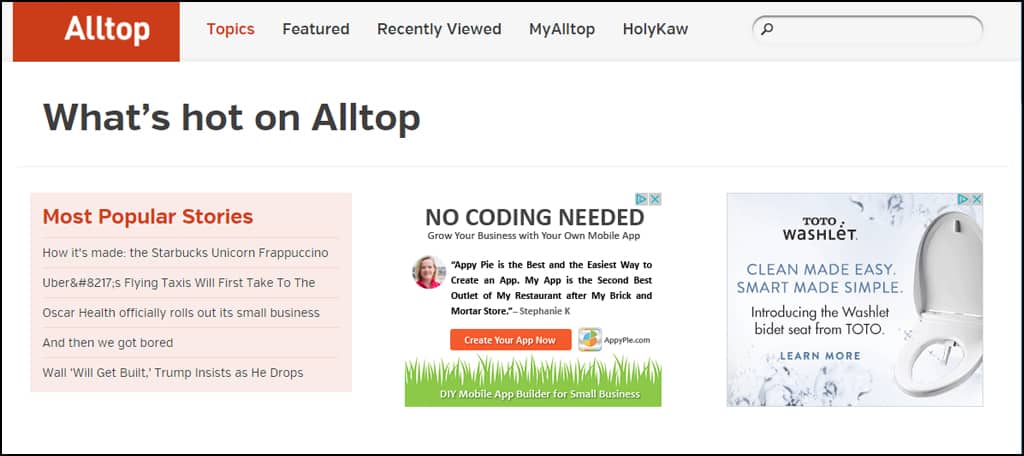
Alltop is an aggregator for the top news services from around the Internet. It covers a very wide range of topics from some of the most pronounced websites in various industries.
This means you can use it as a way to get ideas to create your own articles, even if it’s just taking a different point of view of something that is already covered.
6. BuzzSumo

A lot of content marketing experts use BuzzSumo to come up with topic ideas. This tool will demonstrate how competing websites are currently performing online in terms of shares and engagement.
If you’re keen on the “skyscraper” technique of creating better content, this tool is a good one to use.
7. Google Trends
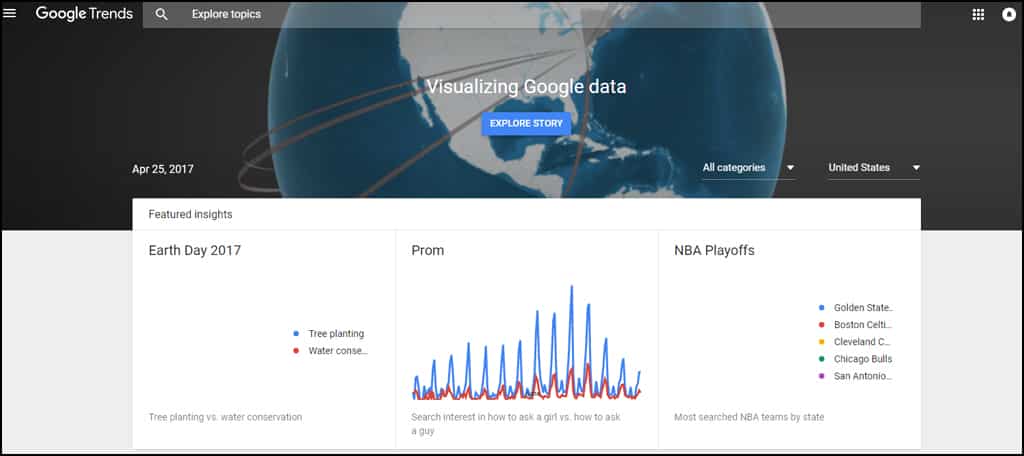
Google Trends is an invaluable tool when it comes to developing content. Users can see how people are using the popular search giant to look for specific information.
The system will show relevant terms used in specific locations, display how the term performs over time and the comparison of words or phrases.
8. Portent’s Content Idea Generator

The system at Portent’s Content Idea Generator is a bit basic, but it can be helpful. You simply place your term in the text field and Portent tosses out a seemingly random topic title.
Although you’ll more than likely have to tweak the title for the content to make sense, it can be inspirational for blog ideas.
9. Linkbait Title Generator

Linkbait Title Generator is a basic system that will take your topic and display a list of potential ideas. That’s really all there is to it.
The titles seem more random than anything. However, they do have a better grammatical feel than many other topic generation tools on the Internet.
10. Quora

Quora has many uses from a marketing perspective. In this case, I’m talking about using it to create blog content. For instance, Quora is popular for its ask-and-answer format.
You can easily turn answers into blog posts of current questions. Some developers will then answer the question in Quora with a link to the blog post.
11. Yahoo Answers
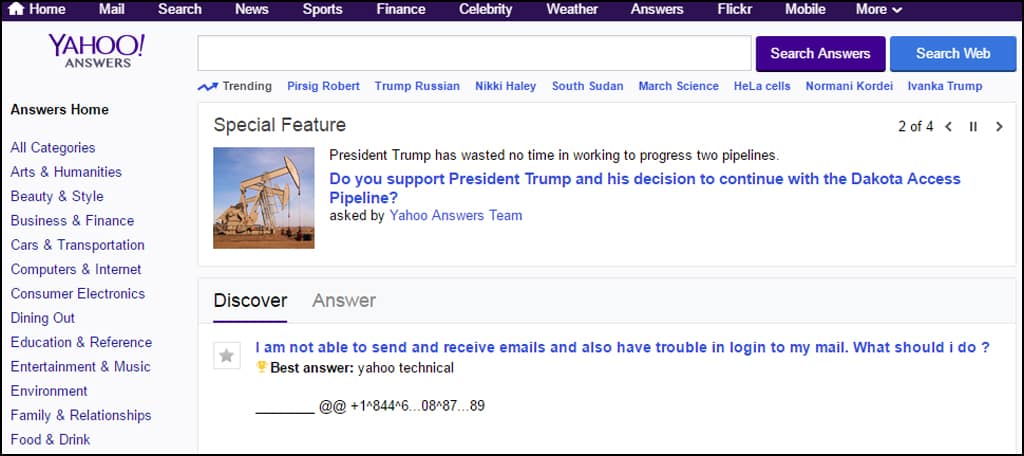
Yahoo Answers works much the same way as Quora in that people ask questions to hopefully find a valid response.
Although it’s not as popular as a forum when compared to many others, it does provide a platform to gather ideas whether they are in response to questions or delving deeper into one of the answers.
12. Industry Specific Forums
Although sites like Quora and Yahoo Answers are a potential wealth of blog content ideas, sometimes it’s better to focus on specific industries. This helps you weed out the content you really don’t need.
Perhaps one of the best ways to go about doing this is running a Google search of: your industry forum.
13. Social Media Groups
Not everyone has the time to put into exploring social media groups. However, it may be worth the investment of time if you’re having trouble coming up with a blog post.
Many of these groups provide quite a few questions and answers that are exploitable to inspire you to write a post to share.
14. Netvibes
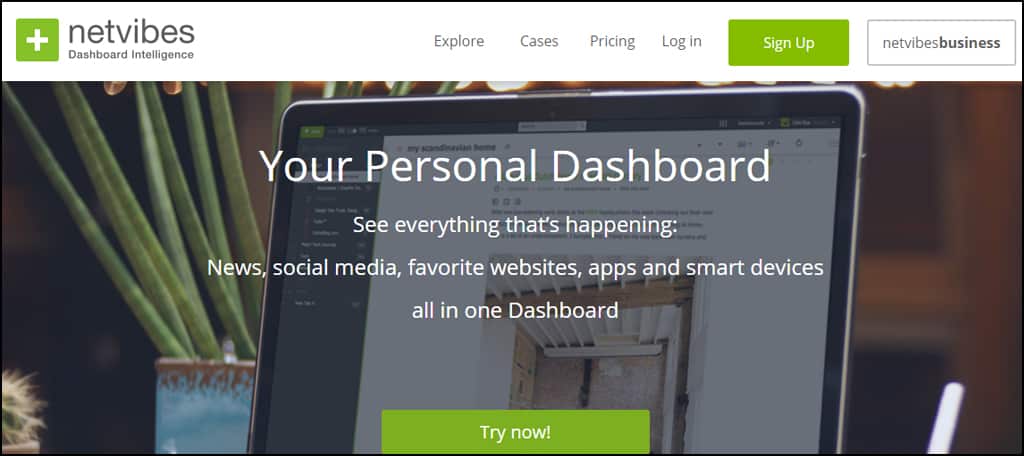
Netvibes is an incredible content aggregator. The system can be used to track various keywords across a vast number of outlets.
For example, you can set your Netvibes dashboard to monitor for the term “fitness” across search engines, YouTube, Twitter, blog RSS feeds and more. Best of all, the free version works exceptionally well.
15. Direct From Website RSS Feeds
While RSS feeds are not as popular as they were in the 2000s, there are still plenty of websites that use them.
You can set up an RSS feed reader to pull content from relevant blogs and sites and keep an eye on what everyone else is creating. This is helpful when you follow a top influencer’s blog for your industry.
16. Pulling from Comment Sections
Comment sections of blogs can be quite useful when trying to come up with ideas for content. In many ways, this method is similar to using question-and-answer websites for inspiration.
Comments can lead to further information or even looking at a topic at a different angle. However, most will seek the questions within comment sections for ideas.
17. People You Follow on Social Media
If you have a social media profile and follow others, there is a reason you follow them. Whether you’re a fan or you enjoy their posts, these people can influence your next blog post.
Take a look at the type of material they find the most interesting and what you can write to attract their eyes to your content.
18. People Who Follow You on Social Media
Keeping an eye on what people like who follow you is key to any marketing platform. It’s all about understanding your target audience. Social media is all about reaching out to the audience and having a conversation.
You can either analyze what these individuals engage in or simply ask a question and base a blog post around the results.
19. Looking at Hashtags
Hashtags related to industry content can be exceptionally useful for blog content strategies. Within these “conversations,” you can find a wealth of buzzwords and questions which you can answer and then share the reply.
You can also get ideas from common articles shared within those hashtags themselves.
20. Expanding on Influencer Points
Social media influencers are usually popular experts in their field. People often come to them for information and answers to questions. There’s nothing wrong with taking one of the points from an influencer’s blog or YouTube video and expanding.
Remember, never copy content. Make the point your own and deliver your own take on it.
21. YouTube to Blog Post
YouTube reaches more 18 to 49-year old people in the United Statesthan any cable network. The platform has video content stretching across almost every industry on the planet.
As a result, it provides a wealth of content that can be easily ported to blog format. Take a look at your industry videos and see if anything jumps out at you for your next blog.
22. Using Instagram
Nearly half of brands online use Instagram. Statistics show this number to rise to more than 70% by the end of 2017. Explore the top Instagram influencers of your industry and determine if there is something you can embellish.
It probably wouldn’t hurt to see if you can answer the questions of those who follow the influencer’s profile.
23. Interview Experts
There’s a reason why experts and celebrities agree to interviews: it boosts branding. Interviewing industry experts or influencers not only gives you content for a blog post, but it will also help improve traffic to the site.
This is especially true if the expert is well known. At any rate, interviews demonstrate professionalism and authority in terms of search engine optimization.
24. Hosting Surveys
Surveys gather information to form statistics. They can also be used to gather information relating to blog content. These platforms can determine future questions to answer on your blog, provide an insight into what your visitors want to read and help create a sense of interaction.
There are a number of ways to integrate surveys on your blog, especially if you use WordPress.
25. FAQs of Competitors
Answering the frequently asked questions of your competitors may provide a lot of content. You can then take it a step further and delve deeper into each answer to make it better in terms of information and quality.
While it may not create an instant boost in site traffic, it does lend to authority for SEO.
26. Repurposing Past Popular Blog Posts
Using Google Analytics or other data tools, you can determine which blog posts are the most popular on your website. Using that particular post, you can then create a complimentary article that provides other information that visitors may want to know.
Don’t forget to add internal links between the articles, even if the first post is more than a year old.
27. Google News Search

Using the “News” search feature in Google is very helpful when looking for the most current topics of your industry.
Many of the sources in this section are updated within minutes of posting new material, which means you can find current news about your industry quickly.
28. Using Business Announcements
Many businesses turn announcements into blog posts to engage the audience. This could be anything from new products coming in an eCommerce store, upcoming sales and discounts or even news elements that impact the business directly.
Any announcement that may be interesting for a follower of the blog may be ideal for content generation.
29. Setting Up Webinars
YouTube isn’t the only facet for sharing video content. A lot of site owners host webinars to inform visitors about a range of topics. You can also take one of these videos and build a blog post to accentuate the content.
Even if your video comes from YouTube itself, you might be amazed by how much adding a thousand words can impact blog visitors.
30. Using Google Webmaster Tools
The “Search Analytics” section in the Search Console of Webmaster Tools can offer a variety of content keywords. By changing the results to “impressions,” you can see the search terms used to find the content already on your site.
Can you come up with an idea to expand on those search terms to engage more visitors? It all depends on the content, of course.
31. Google Autocomplete Search

There’s no doubt that a lot of comedy can come from the autocomplete feature of Google.
However, it can also provide a lot of blogging content ideas. This is a simple method by typing in a question and letting Google show you the most requested content. You can then use the information to create a new post.
32. Google Related Results

The autocomplete feature isn’t the only way Google directly helps with blogging ideas. In fact, the related search results at the bottom of the first page is an eye-opener as well.
This list is usually about eight titles that are relevant to the topic based on user interest and contextual words. It’s also helped many create viral content.
33. Being Controversial
Not everyone likes the idea of creating controversy within their industry. However, it is a quick way to get the attention of both sides of an argument.
The thing you need to be aware of with this kind of content is that it does have the potential to alienate some of your target audience. On the other hand, it can also greatly strengthen the relationship with others.
34. Subscribing to Newsletters
I subscribe to a variety of weekly and monthly newsletters for various industries. It’s a great source of information covering the topics I care about. It’s also easy to find value in these as a source for blog materials.
Whether it’s the sense of “doing it better” or just getting news on something to write about, never underestimate newsletters.
35. Google Alerts
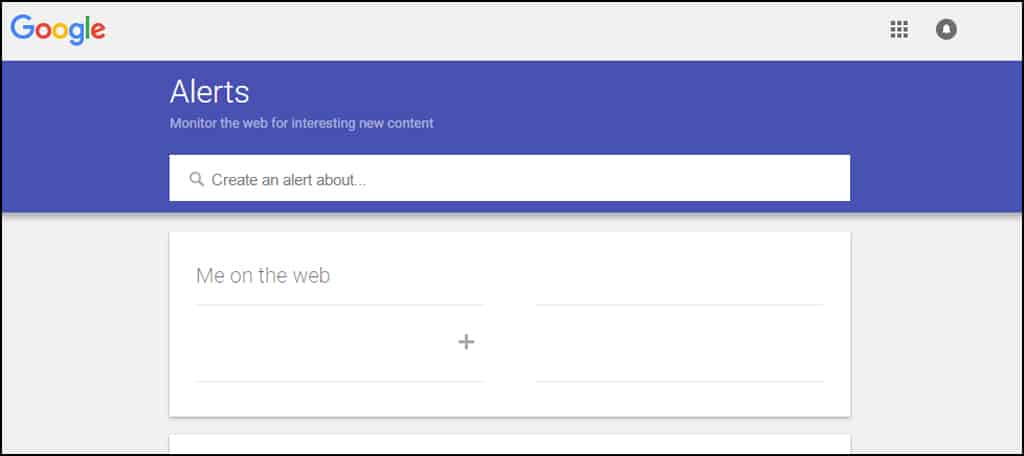
Google Alerts is an excellent platform for getting topic news as soon as it’s detected by the popular search engine. Once you place your alert words, Google will send you an email when anyone publishes content in regards to the content. A lot of businesses use this to monitor when someone mentions the brand.
36. Statistics within the Industry
The Internet is full of statistics stretching across a myriad of industries. Finding current numbers on something related to your business could prove to be helpful when developing blog content ideas.
A lot of people will turn these statistics into infographics, but there is nothing wrong with a text-based version to engage the audience.
37. Using Your Own Data
Surveys are great for collecting information for creating blog posts, but what about internal data? This can easily provide statistical information about your specific business.
For instance, you could write a blog piece around the top 5 most popular products on your eCommerce site. Perhaps a certain percentage of people use a specific service you provide.
38. Ahrefs

Ahrefs is an all-in-one marketing tool that can do wonders for your blogging strategies. On top of data analysis and keyword use, the system offers a content research platform that shows what is being shared the most.
Ahrefs provides the domain rating, number of referral links and estimate organic traffic. This is invaluable when developing a content strategy for your next blog post.
39. ContentIdeator
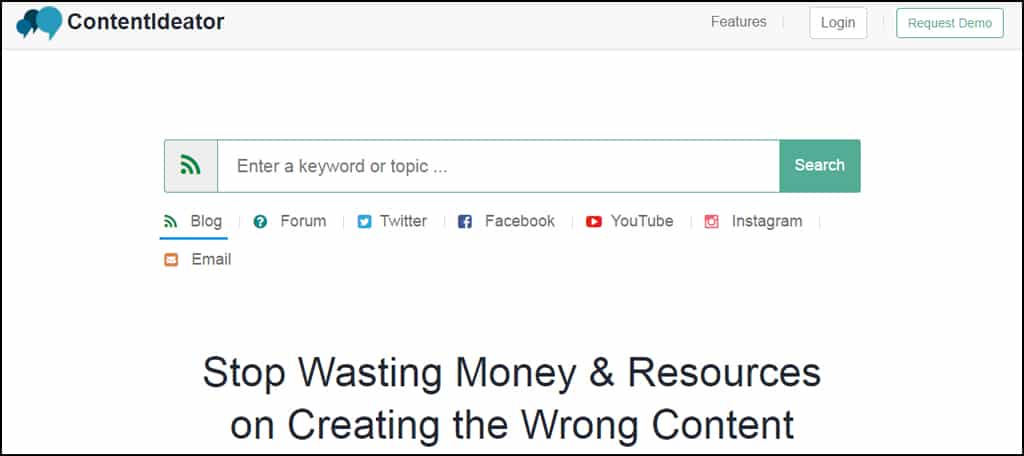
ContentIdeator focuses on more than just popular blog posts. This platform has the capacity to scour forums, Facebook, YouTube and other elements of content to give you ideas.
It also breaks down a variety of metrics such as sharing. Unfortunately, some of the better features are locked behind a premium account.
40. Tweak Your Biz

Tweak Your Biz Title Generator will take your noun or verb and place it into an array of usable content for your blog. The system will provide titles for more than 10 styles of blog posts with a total of more than 100 ideas.
Some of them may have to be adjusted to be grammatically correct, but it may be worth a moment to get an idea or two.
41. Write Reviews
There’s always a product or service that compliments your own that you can write a review about. In reality, reviews are some of the most sought-after content on the Internet.
This plays into the 61% of customers who look online for reviews of a product before making a purchase.
42. Exploring Reddit

Reddit is a well-known corner of the Internet for users to find answers to just about any question one can possibly think of. It’s also an excellent place to get ideas for your own content.
Many YouTube channel owners and bloggers will use the platform to get ideas from fans and followers of what to cover next.
43. Using Social Sharing App Data
Social sharing apps such as Sprout Social and Buffer are great for streamlining your content distribution. However, the analytic data can also be used to get more ideas when you’re suffering from a mental block.
For example, seeing what topics followers of your social profile are retweeting or interacting with more may be a good place to start.
44. Google Surveys

Google Surveys requires a bit of a monetary investment but it allows you to get responses for your questions across the search engine’s network. The system works much like Adwords as you only pay for each completed survey question.
It’s not a bad idea if you want some good statistics for your brand or further the blog with your own collected data.
45. Create a Case Study
Case studies are excellent ideas as they give the content more of a personal feel while delivering real information about the experience.
However, these may take time depending on the type of study you want to complete. These are usually data driven while providing facts about the process.
46. Blog Directory Sites

A lot of bloggers will submit their sites to blog submission platforms such as Bloglovin to help generate traffic. It can also be used to get ideas in your niche.
By glancing over some of the other blogs that are available, you may find a few ideas of your own. This is also a great way to find uncommon content as many of these sites are relatively unknown.
47. Google Keyword Planner
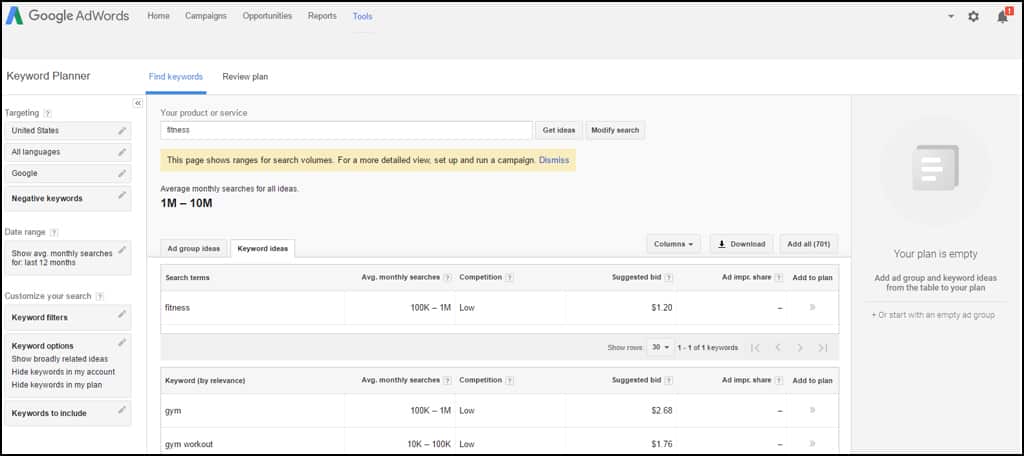
The Google Keyword Planner within Adwords is a common tool for those trying to build great marketing strategies. It’s also usable to find ideas for future content.
Based on relevant terms for the topic you want to cover, you can get ideas from the most popular search terms of what kind of content to create next.
48. Motivational and Inspirational Messages
Connecting with people on an emotional level builds trust within a brand. Developing content that can be inspirational and motivational is often some of the most shared on social media.
Because a lot of people turn to blogs to find self-help or esteem-boosting content, these kinds of posts tend to do well for most websites.
49. Life Hacks
Almost any industry has a product or service that can be used in another way to make life easier. While this often requires a great deal of research and personal experience, “life hacks” are often shared on social media quite easily.
Just make sure the piece is relevant to your blog’s niche. You still need to offer relevance to score well in search engines.
50. Have Fun with a Piece
Sometimes it’s OK to be a bit spontaneous or put a bit of fun into a blog post. I once read a post just before Halloween on a health website regarding why zombies could never truly exist, which was backed with scientific information.
It was developed with a jovial attitude, and was quite informative regarding the human body.
51. Using Competitor Newsletters
In the world of business, it’s all about the “one-up” when facing off against the competition. A great way to do this is to sign up for their newsletters and email lists.
This way, you can see exactly how they are launching the campaign while getting ideas to make your blog posts better.
Perhaps I’ll add a few more to the list…maybe something with a personal edge to it?
52. Personal Experiences
A lot of people love to read about personal experiences. This goes beyond the simple review of a product or service as it adds more of the human element to the piece.
These often connect with the reader more than static information based strictly in fact. It’s also one of the driving forces behind why blogs were developed in the first place: to share knowledge as it is experienced.
53. Personal Predictions
Personal predictions can be fun, but you want to be careful when creating them. If you have an exceptionally large audience, you may be taken as an industry leader.
If you make too many false predictions, it may actually hurt your reputation. However, crunching data and showing statistics can easily influence your success rate.
Besides, most “experts” in any field are sometimes wrong themselves.
54. Creating How-Tos
How-to articles are some of the most profound pieces of content on the Internet. Not only will these kinds of posts help drive new traffic to your website, but they can be very beneficial to secure loyalty from customers and fans you already have.
It denotes a sense of expertise and makes others feel more comfortable in your brand or website.
Expand Your Sources
Speaking from experience, I know how hard it can be to come up with good blog content ideas sometimes. The trick is to remember there are so many outlets for content generation.
Find the ones that prove the most helpful to you and make it part of your daily routine. A fallback plan is better than sitting at your desk looking at a blank screen for hours on end.






No comments:
Post a Comment